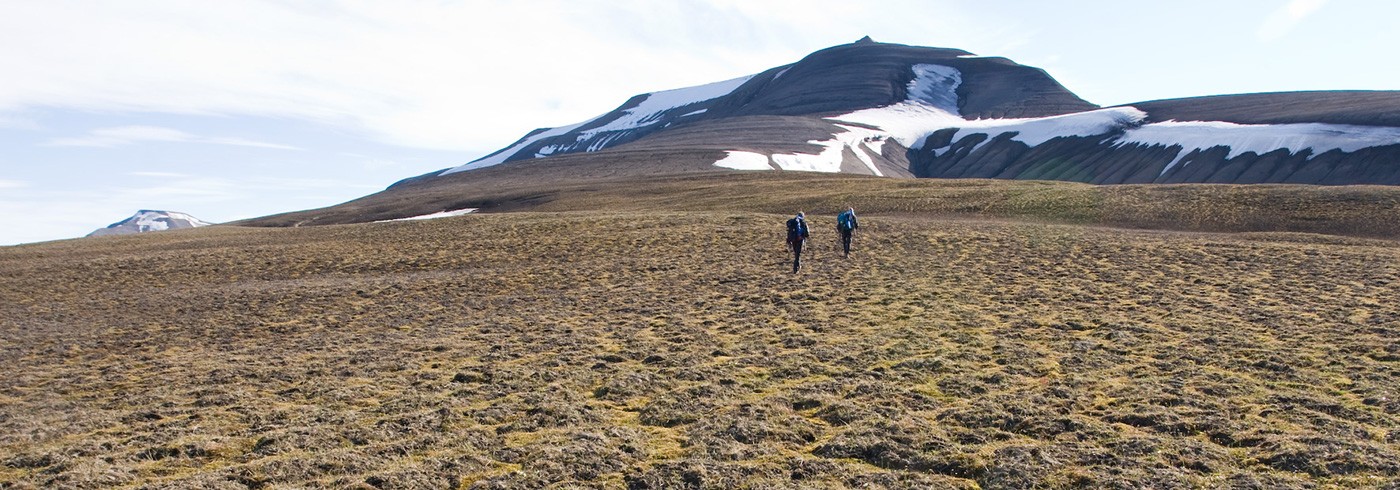Collecting fossils at Svalbard: A bad hunt in the Eocene Forest but a good catch in the Triassic Ocean
1 July 2008 - 31 August 2008When the large reptiles died out at the cretaceous/tertiary boundary, the mammals rose to occupy the ecological niches left vacant and regional mammal faunas developed on the continents around the world. In the Lower Tertiary (Eocene), about 50 million years ago, the faunas of North America and Europe indicate that migration between these two continents took place.
Since the route across Asia and the Bering Strait was blocked by intracontinental waterways it may be presumed that a land bridge existed extending across the North Atlantic. The hypothetical “De Geer Route”, Scandinavia – Svalbard – Greenland, constitutes a likely candidate. If we were able to find fossil mammals from this bridge we could compare them to specimens from either side to substantiate the connection and learn more about the faunas from this time. Based on the depositional environment, the Aspelintoppen Formation, at altitudes above 700 metres, seemed an ideal location to start the search (Dallmann, 1999). These deposits are well known for their beautiful plant fossils consisting of conifers and deciduous trees as well as ferns and horsetails. Our aim was to hunt down the furry inhabitants of this forest.
Fieldwork
The aim of the expedition was to work its way west from Longyearbyen by foot. We found several good localities for plant fossils. But no matter how hard we looked we could not find any animal fossils – not even a lowly mollusk! It became apparent that the chemical properties of the rock that was so beneficial for plant preservation was devastating for shell and bone. We contacted Norsk Polarinstitutt and they arranged transport to Sveagruva some 40 km further south. From the comfort of the barracks at the coalmine we set out to investigate the same formation here. We also included the marine Frysjaodden Formation in our search in the hope of finding early whales. However, animal fossils were as scarce here as in the Longyearbyen area. The only result of our search was bivalves – Solecurtus spitsbergensis and Cf. Solenotellina brevisinuata.
Change of plans
At this point we gave up our search for mammal fossils, for this time anyway. The existence of Eocene mammals on Spitsbergen was unequivocally established in 2006 when two miners observed large footprints in the ceiling of Mine 7 in Longyearbyen. These footprints were later determined to have been left by a pantodont – an extinct cow-sized herbivore.
To make the most of the funds invested in our expedition we decided to turn our attention to older deposits, from the Triassic, about 245 million years ago. Norsk Polarinstitutt again arranged transport, this time to the inner part of Isfjorden. In 2006 one of our party had rediscovered a locality rich in ichthyosaur fossils at this location (Hagström, 2007). We now had an opportunity to collect specimens for our museum. During one afternoon we managed to collect over 300 specimens weighing 15 kg altogether. The material consisted of jaw fragments, vertebrae, ribs and other bones of Omphalosaurus sp. and another genus originating from a time when the earliest ichthyosaurs evolved. We also found a hybodont shark tooth (Acrodus spitzbergensis) and a basal plate of the cephalic spine. Scales and teeth of ray finned fishes similar to Boreosomus and Birgeria were found attached to the ichthyosaur material and at one level we also found what probably was on the Omphalosaurus’ menu – ammonites. In all, a good catch!




